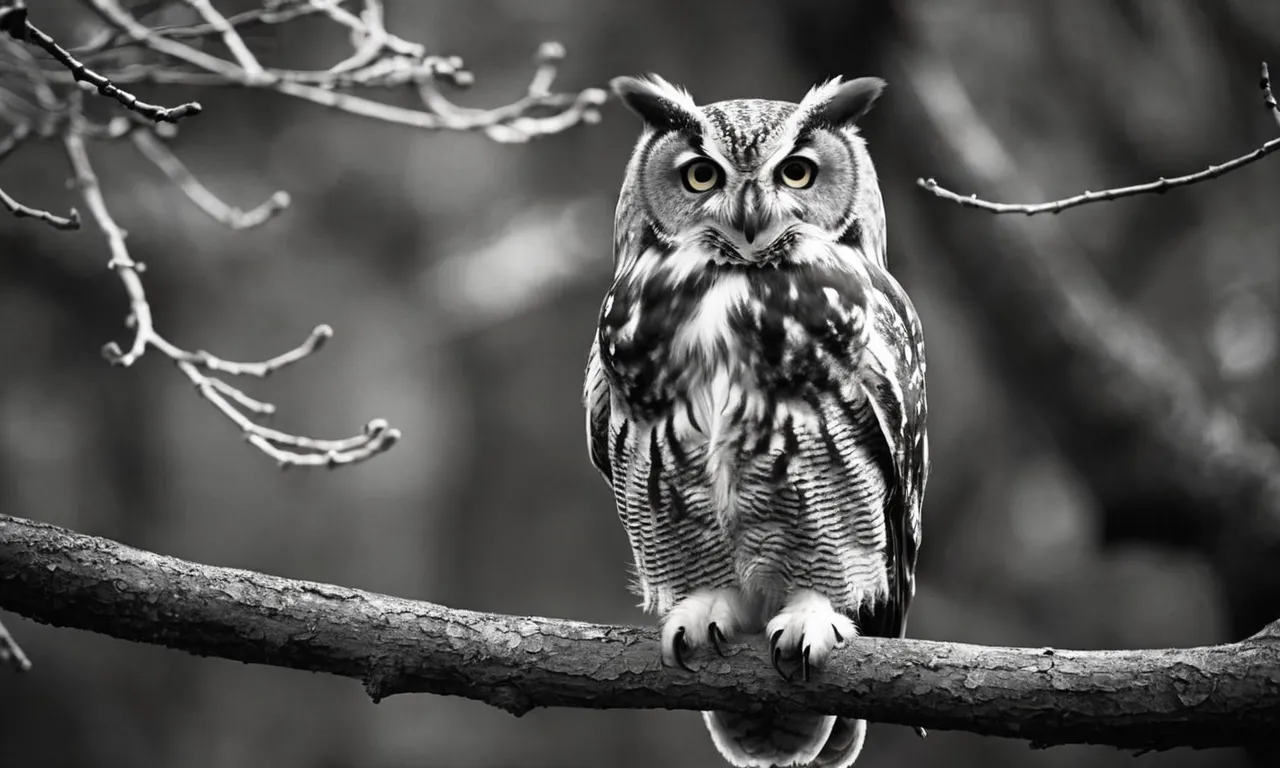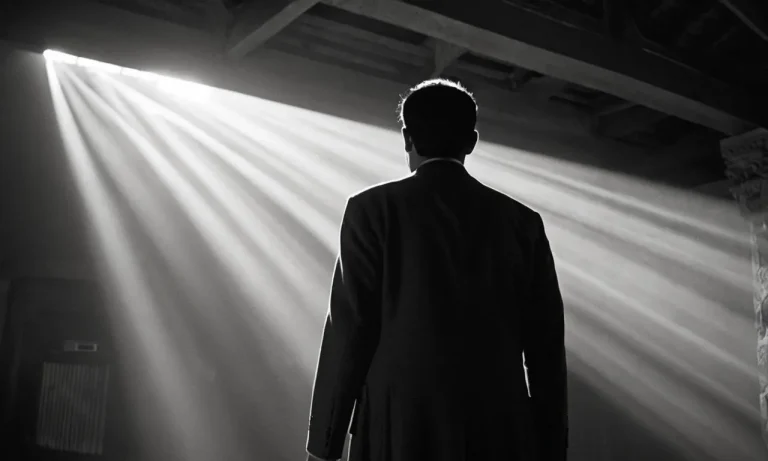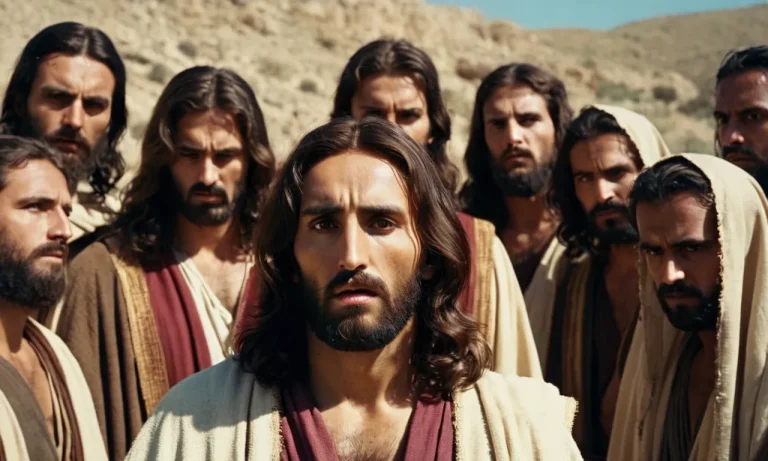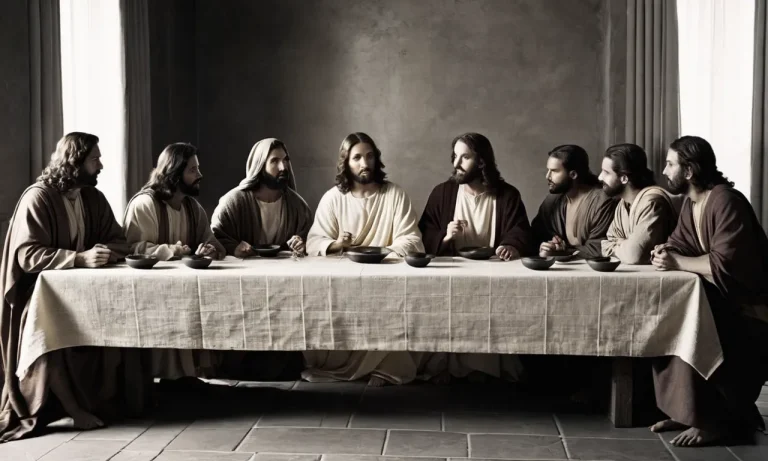What Does An Owl Represent In The Bible?
Owls are mysterious nighttime creatures that have captured people’s imaginations for centuries. Their presence in the Bible has led many to wonder, what exactly does an owl represent according to Scripture?
If you’re short on time, here’s a quick answer to your question: In the Bible, owls are often associated with desolation, loneliness, and evil. They are portrayed as unclean birds that haunt abandoned places.
In this comprehensive article, we will explore the owl’s complex symbolism throughout the Bible. We’ll look at key passages that mention owls, analyzing what they represent in each context. We’ll also examine owl imagery in relation to demons, Lilith, wisdom, and more.
By the end, you’ll have a thorough understanding of the owl’s significance in the Bible.
Owls as Symbols of Desolation
Owls are mysterious nighttime creatures that often symbolize death and destruction in the Bible. Their spooky calls and ghostly appearance make them an apt representation of desolation and abandonment. Let’s explore how owls are depicted in three key books of the Bible.
The Owl in the Book of Isaiah
The Old Testament prophet Isaiah uses the owl to symbolize the devastation facing Babylon after its downfall. Isaiah 13:21 states, “But desert creatures will lie there, jackals will fill her houses; there the owls will dwell, and there the wild goats will leap about.”
This verse paints a sobering picture of once-mighty Babylon reduced to ruins inhabited by wild animals like owls.
Isaiah also associates owls with desert wastelands later in Isaiah 34:11: “But the cormorant and the bittern shall possess it; the owl also and the raven shall dwell in it: and he shall stretch out upon it the line of confusion, and the stones of emptiness.”
Here, Isaiah foretells the desolation of Edom using the owl as a representation of bleak nothingness.
The Owl in the Psalms
The book of Psalms contains several poetic references to owls as symbols of desolation. For example, Psalm 102:6 states, “I am like a desert owl, like an owl among the ruins.” This verse evokes a lonely owl hooting amidst a crumbling, abandoned landscape.
Another vivid example is Psalm 107:4-9. It describes the plight of hungry and thirsty wanderers lost in the desert: “Some wandered in desert wastelands, finding no way to a city where they could settle. They were hungry and thirsty, and their lives ebbed away.
Then they cried out to the Lord in their trouble, and he delivered them from their distress. He led them by a straight way to a city where they could settle. Let them give thanks to the Lord for his unfailing love and his wonderful deeds for mankind, for he satisfies the thirsty and fills the hungry with good things.”
The Owl in the Book of Revelation
The final book of the Bible uses apocalyptic imagery to depict the end times. Revelation 18:2 portrays the fall of Babylon in terms reminiscent of Isaiah 13:21, stating, “She has become a dwelling for demons and a haunt for every impure spirit, a haunt for every unclean bird, a haunt for every unclean and detestable animal.”
The owl seems to be included in this category of unclean birds inhabiting the fallen city.
Owls as Unclean Birds
Listing of Unclean Birds in Leviticus
In the Old Testament of the Bible, specifically Leviticus 11:13-19, God provides Moses with a list of birds that are considered ritually unclean and therefore forbidden to eat. Among the birds listed are the ostrich, the nighthawk, the seagull, the hawk, the little owl, the cormorant, the great owl, the white owl, the desert owl, the osprey, the stork, the heron, and the hoopoe.
So it is clear that multiple species of owls, including the little owl, the great owl, the white owl, and the desert owl, were considered unclean birds that the Israelites were commanded to avoid.
There has been some debate about the exact identities of the birds in the original Hebrew text, but most scholars agree that several owl species are included. The fact that owls are nocturnal and swallow their prey whole, unlike other birds, could be reasons why they were viewed as unclean in ancient Israelite culture.
Avoiding certain animals and birds was one way the Israelites practiced spiritual and physical purity before God.
Owls Grouped with Other Unclean Animals
Beyond the listing in Leviticus, owls are often grouped with other unclean and detestable creatures in the Bible that reflect spiritual impurity or judgment from God. For example, in Isaiah 34:11-15, a prophetic warning about God’s judgment on Edom includes owls possessing the land along with ravens, jackals, hyenas, and serpents.
The passage paints a bleak picture of desolation.
Similarly, owls are mentioned in company with ostriches, wild goats, night creatures, and hyenas as inhabiting the ruins of Babylon after its destruction in Isaiah 13:19-22. And in Jeremiah 50:39, ostriches, hyenas, desert owls, and wild goats are said to make their home in desolate Babylon after its fall.
So the biblical authors commonly grouped owls with other wild, unclean animals as symbols of abandonment and judgment from God.
Some scholars speculate the association of owls with ruins and devastation in the Bible could stem from the fact that owls often live and nest in abandoned buildings. So their presence reflects human absence.
Overall, the morose and desolate habitat of owls seems to color their spiritual meaning in scripture as creatures linked with divine judgment and absence from God.
The Owl as a Creature of the Night
Owls as Nocturnal Hunters
Owls are well-known for being nocturnal hunters. With their specially adapted eyesight and hearing, owls can see and capture prey even in near total darkness. As the sun sets each evening, owls wake up and leave their roosts to begin hunting.
Using their incredible night vision and their dish-like faces to channel sounds towards their ears, owls are able to swiftly and silently swoop down to grab unsuspecting rodents, insects, and other small animals.
The owl’s reputation as an effective nocturnal predator has led to associations with darkness and evil in some cultures. For example, in medieval Europe, owls were sometimes seen as witches or as evil omens because of their silent stalking behaviour under the cloak of night.
The owl’s ability to hunt successfully at night without being detected gave them an aura of mystery and threat.
Associations with Darkness and Evil
Beyond their nocturnal nature, owls have been associated with darkness, death, and evil in some cultural mythologies throughout history. For example, in Roman mythology, owls were seen as harbingers of death if they were spotted during daylight hours or if they perched on a home.
The Aztecs and Mayans also saw the owl as the messenger of death.
This foreboding reputation persists for owls in modern pop culture as well. Owls are often depicted as spooky or ominous creatures in literature and films. For example, in the Harry Potter series, owls deliver ominous messages and warnings.
Owls also frequently appear in Halloween decorations, representing darkness and evil.
However, owls have also symbolized wisdom, insight, and knowledge in many ancient cultures, including ancient Greek and Hindu societies. So while the owl’s nighttime behaviour has contributed to some evil associations, their dignified and intelligent bearing has also earned them positive symbolic meanings in cultures around the world.
Connections to Demons and Lilith
Legends Linking Owls and Demons
Owls have long been associated with evil omens, demons, and the supernatural in mythology and folklore around the world. In many cultures, they were seen as harbingers of doom due to their nocturnal habits and eerie calls. Some key connections between owls and demons include:
- In Arabic folklore, owls were thought to be companions of djinn (spirits or demons) and their hooting was associated with evil sorcery.
- Hungarian folklore links owls to demons known as “lidérc” that take owl form and attack victims in their sleep.
- In Romanian legend, the “strigoi”, troubled souls of the dead, are said to turn into night birds like owls.
- Some Native American tribes viewed owls as messengers of the underworld and companions of evil witches.
- In India, owls are seen as the vahan (vehicle) of Lakshmi and Ganesh’s banes (enemies). Their hooting near homes is considered an evil omen.
While these connections arise more from superstition than reality, they contribute to the aura of mystery and menace that surrounds owls in myth and culture across continents.
Lilith as the Night Owl
Lilith appears in ancient Jewish folklore as a female demon and the first wife of Adam who rebels against him and becomes an evil spirit. Her name translates to “night creature” or “screech owl”, linking her character firmly to these birds in mystical traditions.
Some key connections between the Lilitu (female demons like Lilith) and owls include:
- Lilith is said to prey on women in childbirth and children, flying at night in the form of a screech owl with long talons.
- The Lilitu were said to reside in desolate places like ruins and attack victims at night, much like predatory owls.
- In the King James Bible, Lilith is translated as “screech owl”, directly associating her name with this bird that bears an eerie resemblance to her mythic character.
So the night owl serves as an appropriate representation of the predatory and unsettling aspects of the Lilith legend in ancient mythology and scripture.
Contrasting Representations of Wisdom
The Wise Owl Archetype
The owl has long been seen as an archetype of wisdom in many cultures. With its large, forward-facing eyes that seem to stare right through you, the owl has an aura of ancient knowledge and insight. References to owls as bearers of wisdom can be found in Greek, Roman, Celtic, and Native American traditions.
Even today, the owl endures as a symbol of intelligence and higher learning.
In Greek mythology, Athena, the goddess of wisdom, was often depicted with an owl as her companion. The owl was seen as a protector of sacred spaces where wisdom was shared. In Celtic legends, the owl was associated with prophecies, secrets, and mystical knowledge.
To some Native American tribes, the owl represented the gatekeeper to the spirit world and the keeper of sacred knowledge.
This archetypal association of the owl with wisdom continues today. Many universities and institutions of learning use the owl in their insignia to signify wisdom and education. The use of the owl as a symbol in areas such as these shows the enduring power of this archetype across cultures and throughout history.
Rejection of Pagan owl-goddesses
In contrast to the owl’s positive associations with wisdom, some passages of the Bible reflect a rejection of pagan owl-goddesses worshipped at the time. These deities, such as Lilith and Asherah, were reviled by biblical authors as false idols.
References can be found in Leviticus, Deuteronomy, Isaiah, and other Old Testament books warning the Israelites not to worship these owl-effigies or “household gods” (Leviticus 11:13-19, Isaiah 34:11-17).
The owl and several other creatures were declared “unclean” as they were associated with pagan customs and idolatrous practices.
So while the owl has been viewed positively as a symbol of wisdom, the Bible also contains negative owl symbolism derived from the worship of false idols in the form of owl-goddesses. This reflects the competing religious influences and tensions at the time the Bible was recorded between pagan customs and emerging monotheism.
Conclusion
In the Bible, the owl is a multi-layered symbol associated with desolation, impurity, evil, demons, and false goddesses. Despite some ancient cultures viewing the owl as wise, Scripture repeatedly rejects any positive owl imagery.
For biblical authors, the owl’s nature as a nocturnal hunter and inhabitant of ruins made it an apt representation of those who operate in spiritual darkness and destruction.
Through a close examination of key passages, we’ve explored the nuances of the owl’s symbolism in the Bible. While often portrayed negatively, some ambiguity exists, leaving room for alternative interpretations.
Regardless, the mysterious owl remains a captivating biblical image of the spiritual forces that oppose God.







